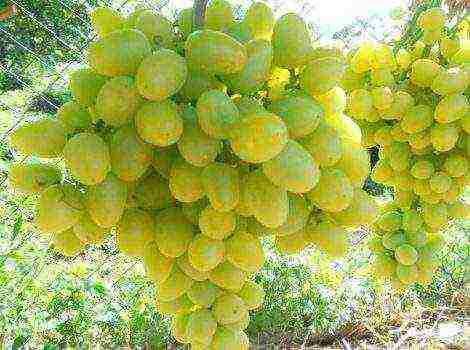Content
If you love cheese, then you have probably already tried many different varieties. What cheeses are the most demanded and popular? Find out and be sure to try what you haven't tried yet!
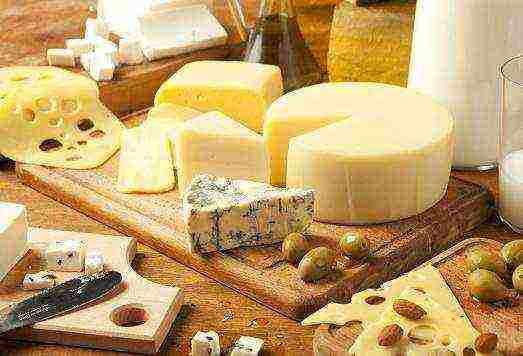
The most popular and delicious cheeses
We bring to your attention the top 10 most delicious cheeses in the world:
1. Mozzarella - delicious and delicate cheese originally from Italy. Traditionally, it was made from buffalo milk, but today the stores sell mozzarella from cow's milk, which is familiar to everyone. This cheese looks like white balls of small diameter soaked in a weak brine.
The product is soft and very delicate, with a pleasant taste. When preparing such cheese, milk is first fermented with a special thermophilic lactic acid culture. Then it coagulates thanks to rennet. After that, the whole composition is heated, and the whey is separated.
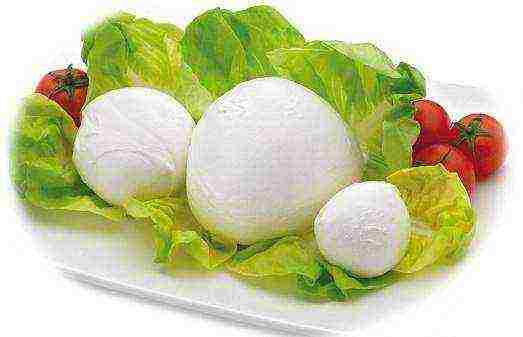
Then this mass is thoroughly and actively kneaded, periodically dipping it into hot water, until a homogeneous viscous mass is formed. Then balls, cubes, pigtails and much more are formed from the finished mass. The finished cheese is placed in a solution in which it is stored. The shelf life is short, so it's best to eat the Mozzarella as soon as possible. This cheese, by the way, can be added to salads.
2. Maskrapone. This cheese looks more like delicate creamy cottage cheese or even yogurt. It tastes incredibly delicate, slightly sweetish. The consistency of the product is more like a curd mass.
The homeland of such a product is Italy (in this country, incredibly tasty cheeses are generally made). To prepare Maskrapone, cream with a fat content of 25-30% is first heated in a water bath to about 80 degrees, then lemon juice, wine vinegar or tartaric acid are added to curdle milk protein.
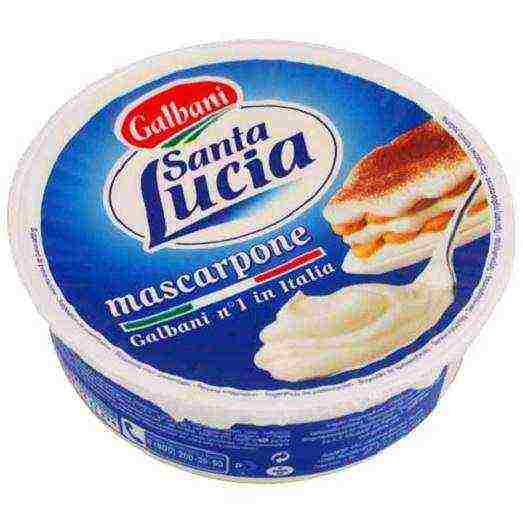
After that, the mass is heated, then cooled and placed in nets to remove serum. You can't call such cheese a dietary one, but it is incredibly tasty. Desserts are often made from it, the most popular of which is tiramisu.
3. Bree - a tender and soft cheese made from cow's milk, originally from France. Previously, it was available only to kings and the rich, but today everyone can taste it. The cheese is a flat cake with a thickness of 3 to 5-6 centimeters and a diameter of 30-60 centimeters.
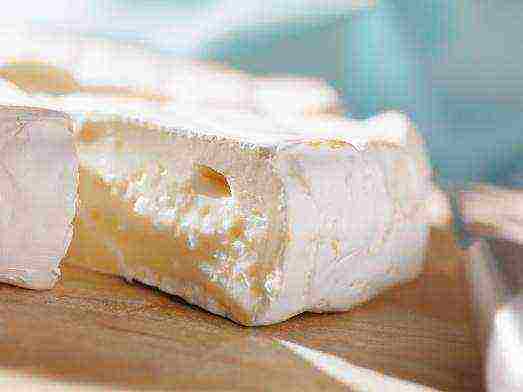
Such a cake is covered with a noble white mold that resembles white velvet (it is quite edible). The smell has an ammonia tint. The taste of this cheese can vary from fruity to pronounced mushroom (it all depends on the aging of the product). Brie is similar in consistency to processed cheese. It is best served not cold, but at room temperature. Brie is considered a versatile cheese as it pairs well with a variety of drinks and foods.
4. The list includes Parmesan... It is a hard cheese with a long maturation. Some believe that the recipe was presented to the world in 1200 by monks, since then nothing has changed. The cheese is so hard that it can crumble when cut. It tastes at the same time moderately spicy, salty, piquant and tender. Manufacturing technology is complex, and the maturation process is very long.
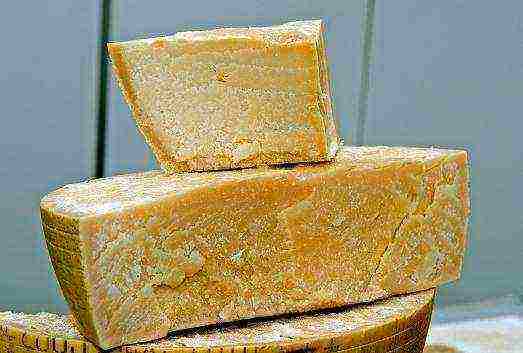
To obtain 1 kilogram of cheese, it usually takes about 16 liters of milk, and maturation can take from one to three years. The older the product, the more pronounced the hazelnut flavor.
In the homeland of cheese, which is Italy, there are special people who determine the maturity of Parmesan with silver hammers (they are called rumors). After a year of aging, the cheese is checked. Some are rejected, branded and removed (such a product may go on sale, but under a different name), and some are sent to mature for at least another year.
5. Cambotsola... It is made by the best cheese makers, the homeland of the product is Germany. In general, this is a German blue cheese that combines the qualities of the Italian Gorgonzola cheese and the French Camembert (the name, by the way, appeared by combining the names of these two varieties).
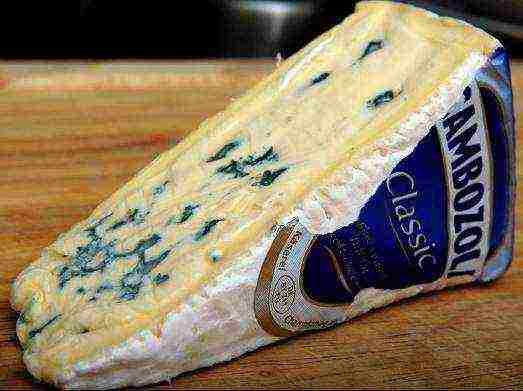
Such a product was patented by one of the German companies in the 70s of the last century. For the production of this cheese, a special specially prepared mold is used, and the softness and tenderness of the consistency is achieved by adding cream. The result is a delicate and tasty cheese with moderate pungency. Best of all, such a product is eaten with fruit and after the disclosure of the aroma (for this, it is better to use it an hour after cutting).
6. Camembert - tender French cheese with a fluffy white mold crust. It tastes delicate and has mushroom notes. Camembert is prepared from whole milk. For coagulation, rennet is used.
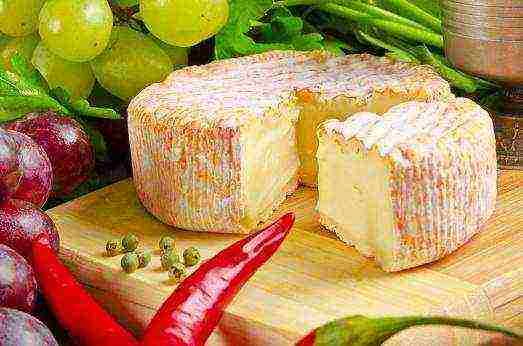
In the process of folding, the mass must be stirred periodically. Then the composition is moved into molds and dried in a special way (this requires the skills of experienced cheese makers), and then salted. Then the cheese will ripen under certain conditions until fully cooked.
7. Dor Blue - blue cheese with mold originating from Germany. For a long time, this cheese was practically the only one of its kind, available for sale in some countries (including the former CIS countries). The recipe was developed especially for lovers of moderately spicy and savory cheeses.
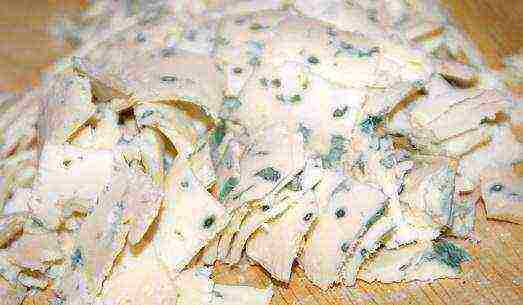
The composition itself and the peculiarities of preparation are still kept secret by cheese makers, but it is known that special molds are used, as well as cow's milk. This type of cheese is best combined with grapes and nuts. If there are several varieties on the table at once, then it is better to leave Dor Blue for last.
8. Gorgonzola... Guess where he comes from? That's right, from Italy. This variety is quite popular and has a tart, moderately spicy and piquant taste. This product belongs to blue blue cheeses.

For manufacturing, cow's milk is used, to which penicillus fungi are added (they are injected with syringes) and special enzymes. Throughout the ripening process, which takes from 2 to 4 months, special metal rods remain in the cheese, providing access to the oxygen necessary for the life of the fungi.
9. Tete de Moine... The name of such cheese literally translates as "monk's head". And it was the monks who were the first to prepare this product. The homeland of cheese is Switzerland, it is exclusive and very expensive. For production, the freshest cow's milk of summer milk yield is used.
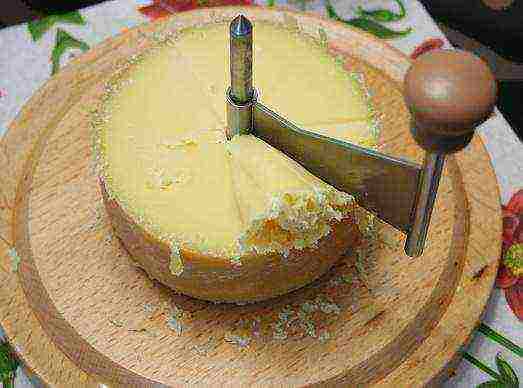
The cheese ripens for at least 70-80 days in wet cellars on spruce boards. During the maturation process, the heads are sprayed with a special saline solution with the addition of live bacteria. The result is a cheese with a yellow flesh, a dense texture and a brown crust.
10. Roquefort. This cheese belongs to blue varieties and is produced in France. Initially, this product was prepared from sheep's milk, but today cow's milk is also used. Milk is fermented, the mass is cut and laid out in forms and salted. An important feature is maturation on oak shelves in a limestone grotto under conditions of sufficient ventilation.
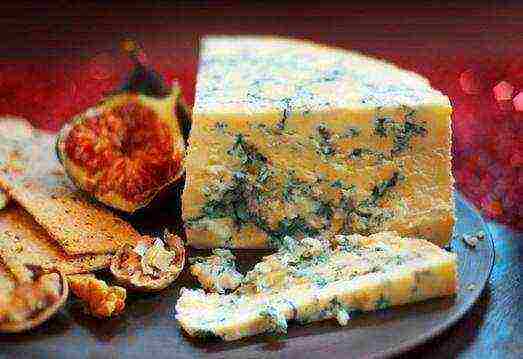
Here are the tastiest and best cheeses in the world. Which one will you try first?
Cheeses are popular in varying degrees in all countries of the world. The variety of varieties of this fermented milk product is truly amazing.In France alone, and in this country there is a real cult of cheese, there are more than 500 varieties of cheese! Hard and soft, spicy and sweet, blue cheeses and cheeses with holes, they are all prepared differently, but there are some of the most popular and beloved varieties bought all over the world. We will talk about them today.
The best cheeses in the world
Of course, tastes differ. Someone adores cheese, and someone is completely indifferent to it, but among such a variety of varieties, everyone will surely find something that they really like. In addition, it is important to know with which wine or sauce it is better to combine this or that cheese. This product is the best appetizer for wine, the French know a lot about wines and cheeses, and their most popular appetizer for wine is just cheese platter.
1. Parmesan. Everyone has heard about this Italian cheese, but not everyone has tried or even seen it on the counter. It is the hardest cheese in the world and matures between 12 and 36 months. To obtain one kilogram of Parmesan, as much as 16 liters of milk are required, but thanks to the unique Italian technology, the output is a unique cheese with a deep aroma and hints of hazelnut. A finished head of cheese sometimes weighs up to 40 kilograms, so cheese is always sold in stores already packaged. When slicing, cheese very often crumbles - it is so hard.
2. Mozzarella.This Italian young cheese is also popular with many. Traditionally, this cheese is made from the milk of young buffaloes, but in recent years, examples from cow's milk have begun to appear. Mozzarella cheese is difficult to confuse with any other, as it is sold in the form of white cheese balls soaked in brine. This cheese is very delicate in taste, it is actively used in the preparation of salads, pizza, lasagna, etc.
3. Maskrapone.And again, the cheese comes from Italy. Mascarpone is an Italian cream cheese, more like cream or soft butter in appearance and consistency. It is this cheese that is often used in the preparation of desserts such as tiramisu. It is very greasy and is often smeared on sandwiches instead of butter.
4. Cambotsola.But this is already German cheese. It is a moldy cow cheese that combines features of two cheeses: Gorgonzola and Camembert. Cambotsola is a soft cheese with a distinctive aroma and rich taste.
5. Bree.One of the most famous and ancient French cheeses. This soft cow's milk cheese with a moldy crust used to decorate the dining table of French kings, so Brie cheese was already appreciated in the Middle Ages. This cheese has always had many admirers and is really worth trying at least once in your life. Could it be love? Brie is a soft and very tasty cheese with a slight smell of ammonia. The older the Brie cheese, the spicier it is. Its aroma is quite specific, you need to get used to it.
6. Dorblu.German blue cheese, in other words - blue cheese. Contrary to the common misconception, not every blue cheese is Dorblu cheese, but in the vastness of the post-Soviet space, this mistake is very common. Dorblu is a dense and crumbly light cream-colored cheese with bluish veins. It goes well with nuts, fruits and dry red wine.
7. Camembert.French soft fat white cheese with a delicate mushroom taste and unsurpassed aroma. Made from cow's milk. It is difficult to confuse it with any other cheese, as it is covered on the outside with a white, moldy, fluffy crust, and on the inside it is soft. Today this cheese is very popular both in France and abroad.
8. Gorgonzola. A bittersweet blue Italian cheese, originally from Italy, ripens in 2-4 months. When this cheese is cut, green stripes are clearly visible on the cut. This cheese is often positioned as a dessert cheese. It goes well with red wines.
9. Roquefort.World famous blue French cheese, previously made exclusively from sheep's milk.Today it is also made from cow's milk and is highly valued all over the world, including in Russia. Top of this cheese is covered with a white shiny and slightly damp crust. Roquefort is distinguished by a bright taste of hazelnuts with a complex spicy aroma.
10. Tete de Moine.Semi-hard Swiss cheese made from cow's milk. Its name can be literally translated as "Monk's head". And the name contains the history of the origin of this cheese, because this cheese is a monastery. It was created 800 years ago in the Belle Monastery and even served as a monetary equivalent. The traditional recipe for making this amazing cheese has not changed for several centuries. It is also not customary to cut it, but only to scrape it off. Tête de Moine goes well with dry white wine.
11. Cabrales.Semi-hard Spanish blue cheese, made in unique conditions, namely in the caves around Cabrales. It goes well with young red wine.
12. Cheddar.Cheddar is a cheese loved by chefs from all over the world. This is a bright English hard cheese made from whole milk with a nutty, slightly spicy and sour flavor.
13. Gruyeres. Hard Swiss cheese of yellow color with a pungent spicy aroma and nutty taste. Depending on the ripening time, Gruyère tastes differently. Young Gruyère is called “soft” and matures within 5 months, “semi-salty” Gruyere matures for 8 months, “salty” - 10 months, “premium” - more than a year, “old” - from 15 months.
14. Conte. The famous semi-hard French cheese, made exclusively from the milk of the following breeds of cows - Simmental and Montbéliard. This cheese ripens within 8-12 months. Conte cheese is distinguished by a pronounced sweetish nutty taste, but each cheese head has its own unique flavor. This is due to the different manufacturing conditions as well as the seasons. In total, there are 90 shades of Conte cheese, and 6 main tastes: fruit, milk, roasted, spicy, herbal and animal. This cheese is one of the most loved in France, it is served both as a separate dish at the end of a meal, and as an ingredient in other dishes. Conte cheese goes well with any wines.
15. Emmental. Semi-hard cheese originally from Switzerland. It is distinguished by a spicy, spicy-sweet taste, large cavities inside the head of cheese (holes). This cheese is freely produced in many countries of the world, so if you see a cheese with this name in a store, it does not mean that it was brought from Switzerland.
Have you ever tried any cheese from the list above, and did you like it?
You may also be interested in
Many people love cheese and have probably tried different varieties of it. And which of them are the most demanded among consumers?
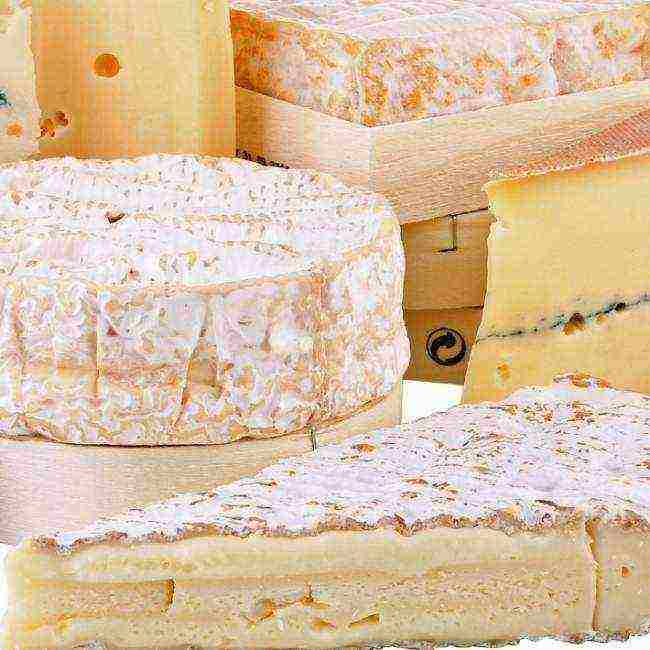
Roquefort cheese
This cheese is classified as a "blue" variety and is produced in France. It was originally made from sheep milk, but today cow's milk is used. First, the milk is subjected to the kvask process, after which the resulting mass is laid out in special forms and salted.
The peculiarity of "Roquefort" is that for maturation it is placed on oak shelves, which are located in limestone grottoes. At the same time, it is very important to observe the correct ventilation of these grottoes.

Gorgonzola cheese
This cheese comes from a temperamental country - Italy. It is also classified as a "blue" variety with the presence of mold. Gorgonzola has a spicy, slightly spicy and tart taste.
Made using cow's milk. Special enzymes and "penicilla" mushrooms are added to the cheese, which are introduced through syringes. Throughout the period allotted for ripening (7-17 weeks), metal rods are present in the cheese, providing the flow of oxygen, which is necessary to maintain the vital activity of the mushrooms.
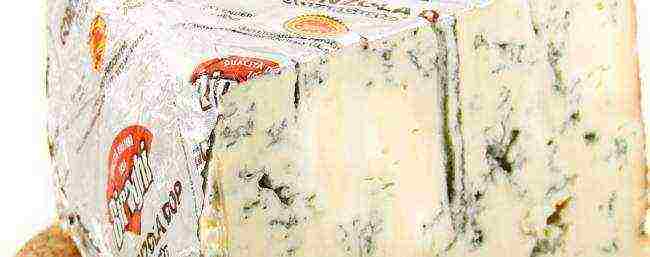
Camembert cheese
This cheese has a delicate mushroom flavor and a crispy white mold. Prepared from whole milk, produced in France. To curl the cheese, special enzymes are used - rennet. In the process of curdling, the curd mass must be systematically mixed. After that, it is dried by a certain method, placing it in special molds. And the final step is salting. Then the cheese is left to ripen under special conditions.
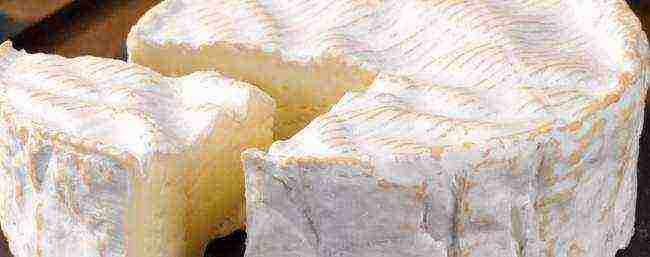
Parmesan cheese
It is believed that the recipe for this type of cheese was presented to the world by ancient monks who lived in the 11th century. Parmesan has a very hard consistency. When cutting, it is impossible to form even pieces or plates, the cheese will break off and crumble. Parmesan is famous for its delicate taste, which is moderately salty and spicy.
As for the technology of its preparation, it is very complex, and the ripening process is long (1-3 years). The longer the ripening period, the more pronounced the nutty flavor in the cheese. To get 1 kg of the finished product, you need to use about 16 liters of milk.
It is interesting!
There are craftsmen in Italy - Parmesan cheese tasters. They know how to determine the "age" of a cheese using special hammers made of silver. These tools are called "rumors".
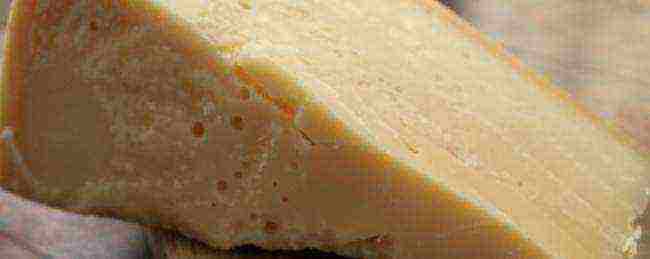
Mascrapone cheese
The homeland of Mascarpone is Italy. This cheese has a soft consistency and looks more like yogurt or curd cheese. Its taste is a little sweet and incredibly delicate. To prepare the product, cream is heated in a water bath, the fat percentage of which is at least 25%. The heating process lasts until the temperature of the cream reaches +80? С. After that, tartaric acid is added to the cream (sometimes it is replaced with wine vinegar) and lemon juice. These additives allow the milk protein to curdle.
Then the mass is cooled and placed in special mesh trays. This allows the whey to be removed from the mass. Mascarpone is far from a dietary product, but it has an exquisite taste. Various desserts are prepared from this type of cheese, one of which is very popular all over the world. Of course it's tiramisu!
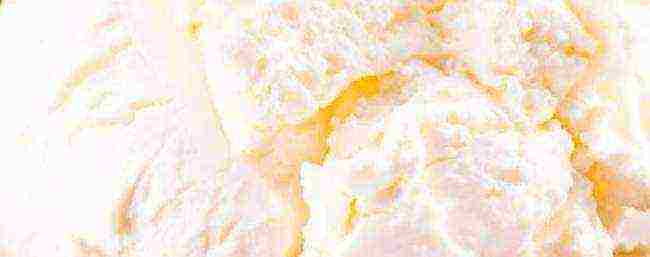
Cheese "Tete de Moine"
The monks were the first to cook this cheese. Translated, its name sounds like "the head of a monk." The homeland of Tête de Muan is Switzerland. It should be noted that this type of cheese is exclusive and not cheap. For its production, fresh cow's milk is required exclusively for summer milk yield. Tête de Moines matures for 10-12 weeks, being on spruce boards, arranged in the form of racks in a damp cellar. The ripening process requires periodic spraying of the cheese with a saline solution containing live bacteria. The flesh of the finished product has a golden color, the crust is brown. The consistency of Tête de Muan is moderately dense.
Dor Blue cheese
The birthplace of cheese is Germany. Refers to blue mold varieties. For many years, Dor Blue was the only one of its kind on the market. The recipe for its preparation was created especially for lovers of cheeses with a spicy taste.
Until today, cheese makers do not elaborate on the details of the preparation of this cheese. But general information has nevertheless become a national property - it is prepared in cow's milk using a special type of mold. Gourmets are sure that Dor Blue is most successfully combined with all varieties of nuts and grapes. If there are several types of cheese on the table from the appetizers, one of which is Dor Blue, it is advisable to eat it as a dessert, and not as a main snack.
Mozzarella cheese"
This cheese comes from Italy. According to a long tradition, it is made from buffalo milk, but today you can find Mozzarella on sale, made from the usual cow's milk. This cheese consists of small balls that are placed in a special brine.
Mozzarella has a delicate taste and soft texture.For preparation, milk is first fermented using a special culture - lactic acid, thermophilic. Due to the presence of rennet, milk curdles. Then the mixture is heated and the whey is separated. Then the mass is kneaded until smooth, periodically dipping in boiling water, until a viscous mixture is obtained. At the end, various shapes are formed from the finished product - pigtails, cubes, balls. The product is placed in a weak solution, where it is stored permanently. By the way, the shelf life of this type of cheese is short, so it is better to eat it within a few days after purchase. Mozzarella is most successfully combined with vegetable salads.
Cheese "Cambotsola"
This is a German type of mold cheese. Only professional cheese makers can make it. Cambozolla combines the qualities of two cheeses - Camembert and Gorgonzola. Hence the name. In its manufacture, specially prepared molds are used. Soft texture and delicate taste are achieved by adding cream to the composition. Experts recommend eating this cheese an hour after cutting, as its taste will fully unfold. Best consumed in combination with fruit.
Brie cheese
Bree is from France. It has an exquisite aroma and piquant taste. It is made on the basis of cow's milk. Previously, this cheese was available only to wealthy people, but today everyone can afford it. Brie goes on sale in the form of small cakes, the thickness of which varies from 3 to 6 cm.
The surface of the cheese is covered with white noble molds. The aroma of Brie has ammonia notes. Consistency similar to processed cheese. The taste depends on the duration of its aging and can be pronounced mushroom or fruity. Brie is a versatile cheese that goes well with a variety of foods and beverages. Serving Brie is advisable when it is not chilled.
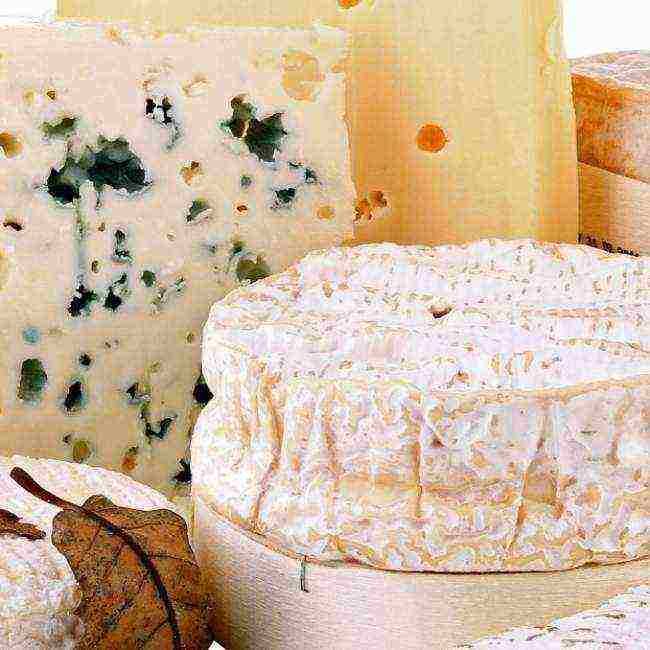
22.05.2014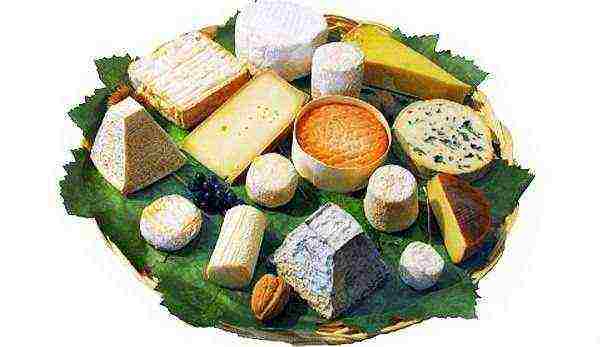
Cheese is a healthy and generous dairy product with a variety of tastes.
The addition of different types of cheese gives different piquancy, creaminess or astringency to the finished dish. The food gets a special aroma and taste.
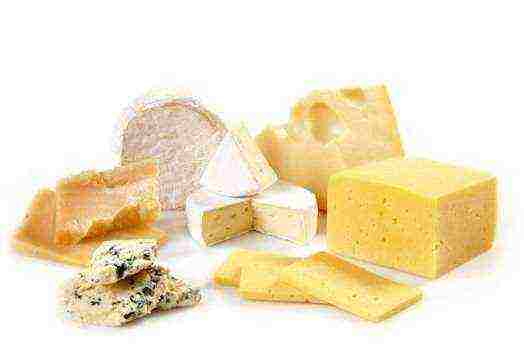 Cheese is often used in recipes as one of the ingredients. Different types of cheeses emphasize and complement the flavors of ready-made dishes in different ways.
Cheese is often used in recipes as one of the ingredients. Different types of cheeses emphasize and complement the flavors of ready-made dishes in different ways.
In salads, a dairy product is used as one of the layers and as an addition to the main components. Grated cheese serves as a decoration, flavoring addition.
Due to the fact that cheese has the ability to rapidly melt and, at the same time, almost without changing the original taste properties, it is used in the preparation of hot dishes. Cheese is added to soups, pizza, meat, vegetables and of course pasta.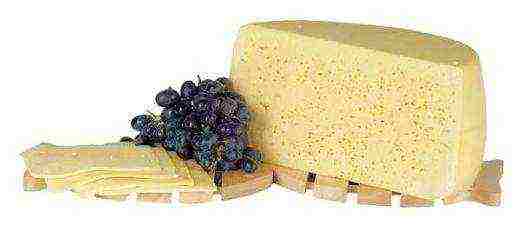
How to store cheese properly:
Cheese is a lively and capricious product. He is continuously in the process of maturation. If stored improperly, the ripening process is accelerated.
High temperatures and low temperatures "kill" the cheese. If you freeze the cheese, it will begin to crumble when thawed. If left in 30 degrees heat, the cheese will melt and spoil very quickly.
If you store cheese at room temperature, it dries quickly. Mold, white bloom and an unpleasant odor will appear on the surface.
The amount of moisture in the air also affects the cheese. High humidity accelerates spoilage, while low humidity dehydrates and dries.
Exemplary storage conditions for cheese:
- stable temperature from 6 to 8 degrees Celsius;
- constant moisture content of approximately 90%;
- ventilated place.
Cheese is best kept in the refrigerator at home. There are the best conditions for him.
To store cheese in the refrigerator, it is advisable to use a glass container with a lid and add a couple of sugar cubes there. Sugar absorbs excess moisture and extends the shelf life of hard cheese by about 5 months, soft cheese by 10 days, and blue cheese by a couple of months.

Recommendations to help preserve cheese longer:
- Don't take a lot of cheese. Buy as much as you need for cooking or consumption within a week.
- Do not expose cheese to sudden changes in temperature. In the refrigerator, place it on the bottom shelf where fruits and vegetables are stored.
- Cheese should be kept wrapped in plastic wrap, plastic bag, or stored in glass containers. Otherwise, it will become saturated with the smells of the contents of the refrigerator and dry quickly.
- Processed cheeses have a longer shelf life. In some cases, they can be kept outside the refrigerator. During the production process, such cheese is subjected to heat treatment, which slows down the process of further ripening of the cheese.
Cheese is divided or classified into hard, semi-hard, soft and pickled
This division is clearly illustrated in the cheese infographic (clickable)
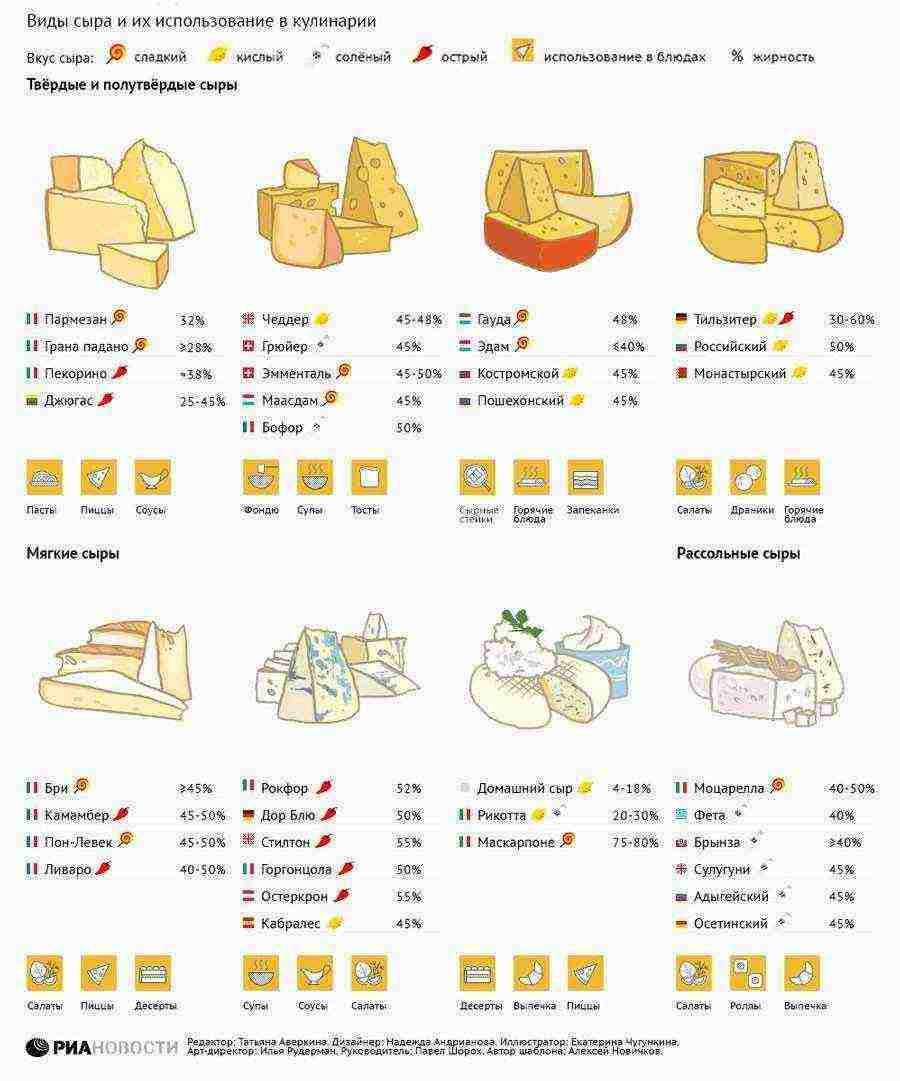
Another infographic, created at the Pop Chart Lab, shows a cheese wheel.
It clearly shows how cheese is classified according to the type of hardness and type of milk (clickable).
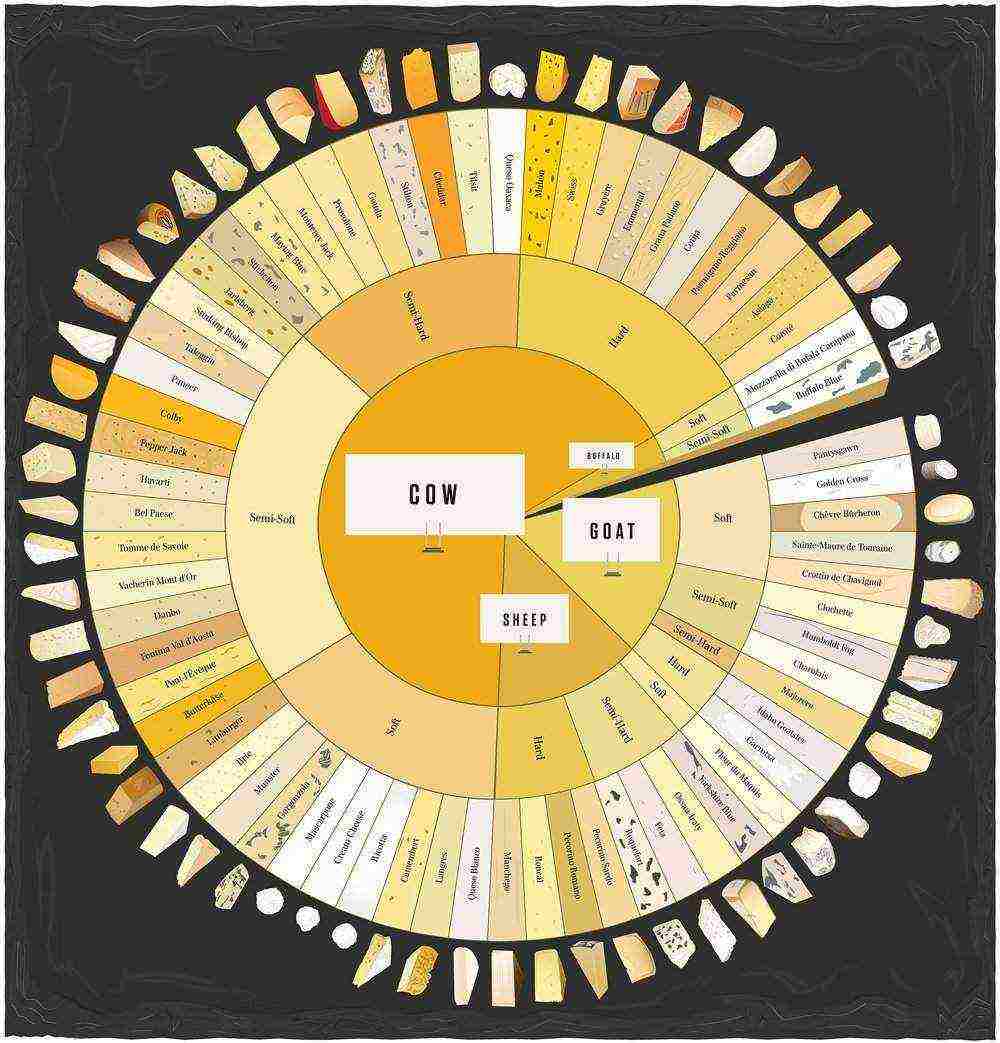
What are different types of cheeses eaten and cooked with?
Hard cheeses

Parmesan is added to pastas, pizzas and sauces.
For making toasts and sandwiches, it is more correct to take cheddar and maasdam. They also work very well for cream soups.
If you just need to sprinkle cheese on top of a hot dish, then Gouda, Edam, Kostroma and Poshekhonsky cheeses will do.
For salads, pancakes, casseroles, Russian cheese will do.
Soft cheeses
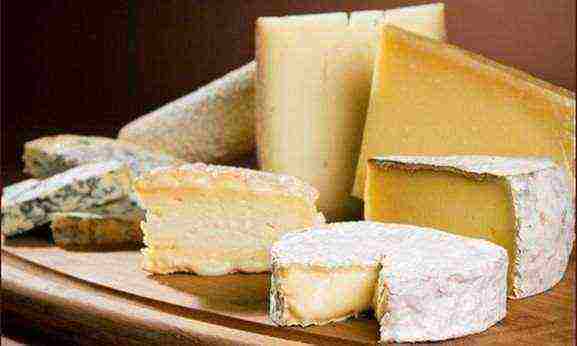
Spicy Camembert and Livaro are perfect for spicing salads and hot dishes.
The versatile mozzarella is ideal for baking pizzas and lasagna.
Sweet brie and mascarpone are very good for desserts and appetizers for wine.
Blue cheeses - Dor Blue, Roquefort, Stilton - are good for anything but baked goods. They have too spicy aroma and tart taste.
Ricotta, on the other hand, is made for baking: its sour-salty taste is completely unobtrusive.
Pickled cheeses
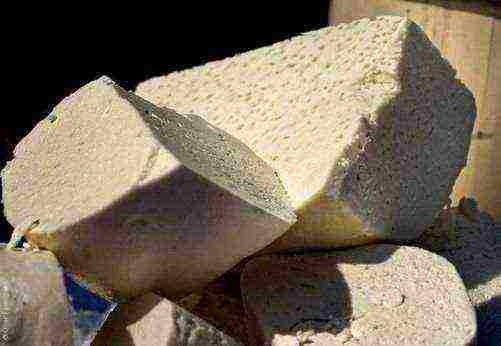
Almost all brine cheeses - feta, suluguni, feta cheese, Ossetian cheese - have a sour taste, therefore, they are suitable for salads and baked goods.
Found a bug? Please select it and press Ctrl + Enter.
